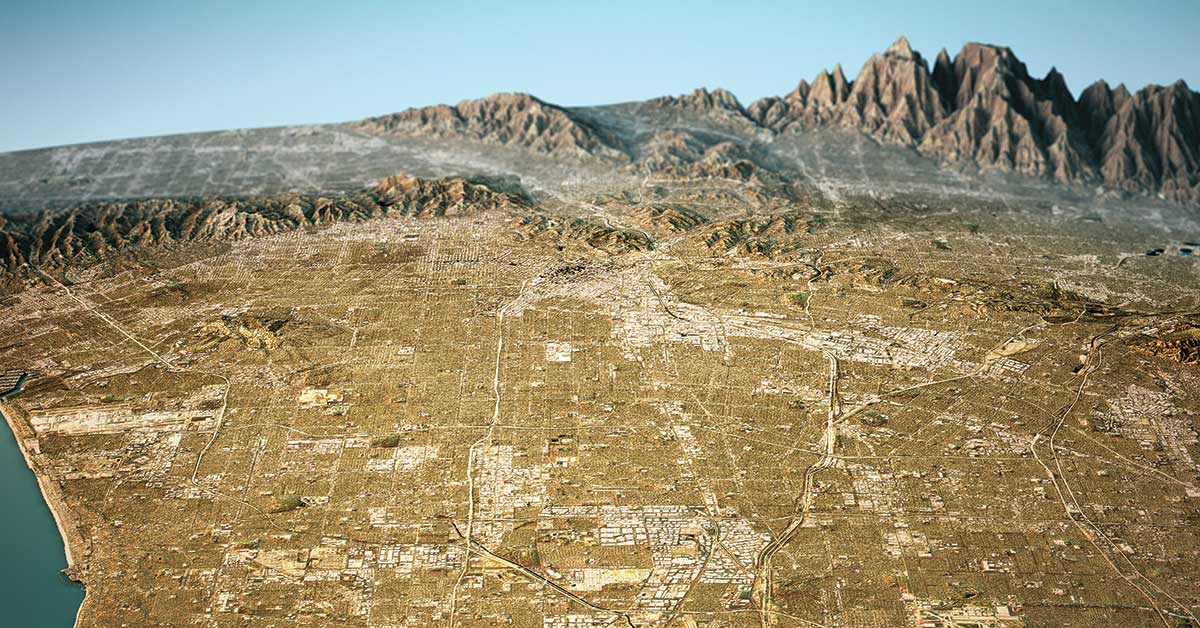Resolving Border Security Threats with Integrated Solutions

Lines on a map don’t follow the path of least resistance. Towering mountains, jagged shorelines, and barren landscapes that once served as effective borders are now playgrounds for the opportunistic. That meandering, invisible line that skirts through corridors of geography is what separates everything and everyone that you’ve sworn to protect from the everchanging threats that jeopardize their well-being. Effectively monitoring, navigating, and defending vast areas of terrain is key to safeguarding the land that once held its own.
 Elusive, well-equipped border security threats can push traditional patrols to the brink. When detection range directly affects response time, reliably spotting and determining the intentions of approaching individuals, vehicles, and UAS must occur faster than ever. FLIR integrated border solutions package the best surveillance technology into dynamic, scalable platforms to help operators make faster, more confident interdiction decisions.
Elusive, well-equipped border security threats can push traditional patrols to the brink. When detection range directly affects response time, reliably spotting and determining the intentions of approaching individuals, vehicles, and UAS must occur faster than ever. FLIR integrated border solutions package the best surveillance technology into dynamic, scalable platforms to help operators make faster, more confident interdiction decisions.
The Technology
Vision is the cornerstone of every border surveillance platform. Pushing the boundaries of what we can see—from high ground and binoculars to electro-optics and infrared sensors—is the determining factor of a system’s efficacy. Optics innovation has dramatically expanded the capabilities of perimeter protection, where eyes-on-target is the gold standard for threat identification.

FLIR sensors help officials detect unlawful and unsafe crossings of the English Channel
Long-range IR imaging gives operators the ability to pinpoint humans, vehicles, and other heat-generating equipment in any lighting condition. The sensitivity of high-performance IR cameras captures key classification details in complete darkness and adverse weather conditions, such as whether a target is armed or if a vehicle is under power. Often combined with IR imaging in a multispectral, pan/tilt sensor, high-resolution visible light cameras offer unmatched identification to complement the 24/7 detection of infrared optics. The long-range capability of these daylight cameras helps capture license plate details, aircraft registration numbers, and individual characteristics.
Achieving a new level of mission flexibility, unmanned aerial systems quickly cover grueling terrain where other means of navigation are impractical. Stabilized EO/IR payloads and advanced video analytics offer the perks of integrated multispectral imaging in a compact, highly maneuverable system. With up to 40 minutes of flight time or indefinite in-air replacement using multiple UAS, airborne surveillance is more feasible than ever.
Combining optics, radar, and unmanned systems elevates each technology’s strengths while simultaneously covering any shortcomings.

An Integrated System
Integrating complimentary technologies helps achieve a true tactical advantage while defending a perimeter. Combining optics, radar, and unmanned systems elevates each technology’s strengths while simultaneously covering any shortcomings. Radar cues multispectral cameras to focus on an approaching target’s position. IR cameras pinpoint and classify an armored vehicle under the cover of darkness. Visible light cameras capture key identifiers that radar and IR imaging can’t distinguish. A drone reestablishes eyes-on-target when line-of-sight is interrupted. The efficacy of a surveillance solution lies in the sum of its parts. The more specialized technologies operating in the same ecosystem, the greater your advantage.
FLIR Cameleon command and control brings each detection technology into a streamlined interface to fully leverage GIS mapping, target tracking, and slew-to-cue camera controls. Whether operating in the field or from a dedicated command center, FLIR video management software integrates a virtually unlimited number of sensors into a networked solution.
Integrated solutions serve as building blocks that are infinitely scalable and interchangeable. FLIR border solutions operate in a common ecosystem for unparalleled flexibility and expansion.
Added Versatility and Scalability
Tapping vehicles, aircraft, and dismounted personnel to deliver various detection technologies creates a more dynamic, custom solution. The most effective strategy to reliably cover one 50-mile segment may change dramatically over the following 50 miles. Fortunately, integrated solutions serve as building blocks that are infinitely scalable and interchangeable. Whether current funding only covers the highest-risk 100 miles of a 200-mile problem, FLIR border solutions operate in a common ecosystem for unparalleled flexibility and expansion.
Long-range IR and radar achieve impressive levels of coverage. But when your area of interest spans hundreds of miles, impressive often isn’t acceptable. Fixed-mount installations are effective but require significant levels of investment for a gapless perimeter. Mobile surveillance systems help address this challenge by offering versatility throughout challenging terrain. With decades of sensor leadership and innovation, FLIR is well-equipped to deliver high-performance surveillance technology as a vehicle-mounted or man-portable solution, regardless of SWaP-C constraints.
Ground vehicles, such as the FLIR LVSS, allow a single operator to access remote, high-risk areas or effectively cover multiple waypoints in quick succession. The skid-based design converts a standard pickup truck into a mobile command center that can be deployed or packed up in minutes. For more demanding terrain, a compact camera/radar mast is installed onto an all-terrain vehicle chassis, offering short- to mid-range surveillance from a more rugged and nimble system.

The Bottom Line
Technology sheds a light on what lies beyond that darting line that once separated known from unknown. The intentions of those who crawl through the brush, walk under the cover of darkness, or speed through the desert will be known well before they reach the fence line—if there is one.
Unified optics, radar, UAS, and command software create a true tactical advantage to quickly detect, track, and intercept approaching threats. These integrated solutions help operators make informed mission-critical decisions for safer force protection and more secure borders.


